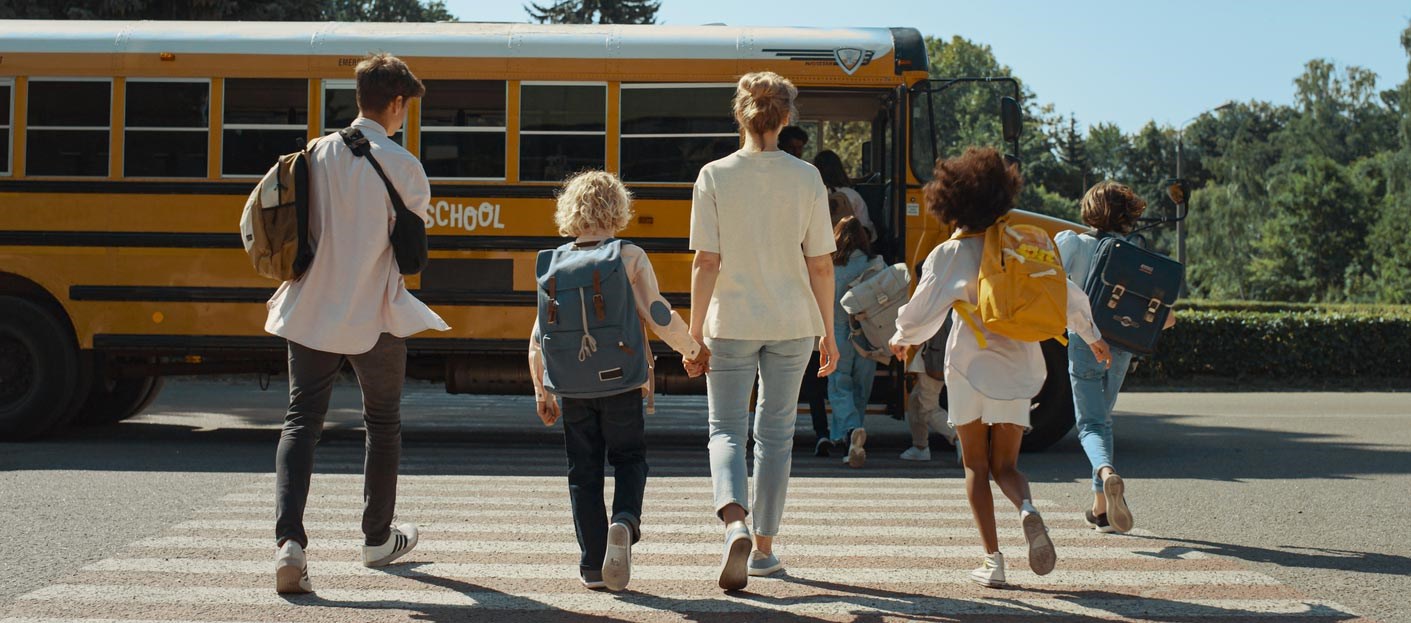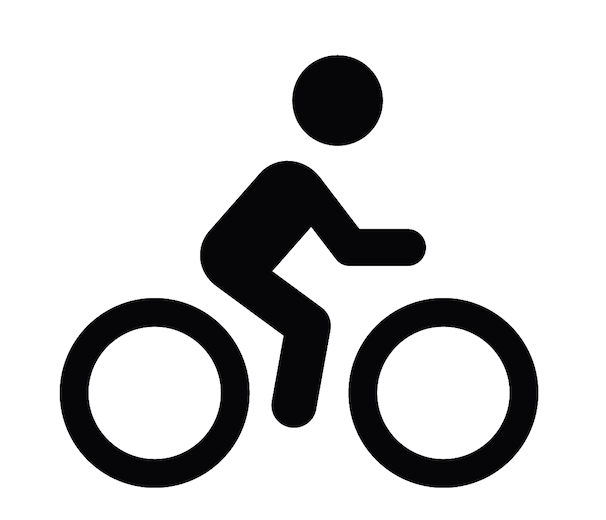Getting to School: Staying Active & Safe

草莓社区 encourages its students and families to walk to school whenever possible. Not only does it help to maintain a healthy and active lifestyle, but it also provides opportunities for school communities to develop bonds and grow closer together. Using the tips below, discover how you can make your morning walk to school a part of an active and healthy lifestyle.
![]()
Benefits of walking to school:
- Promotes an active lifestyle: Walking to school helps to maintain a for everyone and contributes towards fitness goals for all ages.
- Improves mental health & well being: Daily physical activity and fresh air have been shown to improve mental health and well being, which helps students remain focused and ready for learning.
- Deepens community ties: Community connections are also an integral part of the school experience and are further strengthened when traveling to school with others.
- Develops confidence & independence: Traveling to school can also help children develop confidence and independence as they get older and more comfortable being outside and doing things on their own.
- Reduces environmental footprint: Walking to school also means less vehicle traffic and pollution in the community.
To learn more about the health benefits of walking to school from Fraser Health, .
![]() Safety tips for walking to school:
Safety tips for walking to school:
- Only cross at marked crosswalks: For the safety of yourself and those around you, do not cross the street unless at a marked or controlled crosswalk. Drivers are less likely to stop if you begin crossing in an unmarked section of the road.
- Look both ways before crossing: Confirm that you are aware of any traffic in the area and are crossing at a safe time in a designated crossing.
- Make sure any crossing lights are working: If you’re at a crossing with buttons and a light, make sure the lights are flashing and alerting drivers before crossing.
- Make eye contact with any drivers approaching the crosswalk: Ensure that drivers see you and are slowing down to a complete stop before you enter the crosswalk.
- Walk in groups or pairs: Walk to school with a friend, a trusted adult or in a group to increase safety and reduce the risk of accidents or encounters with strangers. Having company can also make the journey more enjoyable and encourage better awareness of your surroundings.
- Walking school bus: Check if your school has a walking school bus to join. These are organized groups that walk to school together, picking up students along the way.

Alternate travel methods:
- Cycling: Going to school can also be a great way to get some time on your bicycle. As always, wear a helmet and protective gear and practice safe travel.
- Carpool: If you will be driving to school, you can reduce vehicle congestion by offering to carpool with other families in your area.
- Take public transit: Families and students who are old enough may also want to consider public transit as a means to get to school. Try using to find the nearest bus route in your area.
 Reminders for parents & caregivers:
Reminders for parents & caregivers:
- Dropping your child off in a safe area: If dropping off a child from a vehicle, have them exit and enter the vehicle from the side closest to the sidewalk or roadside. Warn them not to cross the street mid-block.
- Be aware of your surroundings before moving your car: Make sure you scan thoroughly to ensure there are no children or pedestrians around your vehicle before starting it and moving or backing up.
 Reminders for drivers:
Reminders for drivers:
- School zone speeds are still in effect for school sites hosting summer learning programs. Some may be indicated with a ‘Summer School’ sign below the normal school zone sign. Please be cautious near all schools, every day.
- In addition, many schools are located near park spaces and playgrounds. For all designated park zones, the speed limit is 30km/h from dawn to dusk.
- Scan crosswalks and intersections before driving through: Be sure to scan from left to right as you approach any potential crossing areas, especially when near schools, parks and play areas.
- Watch what other drivers are doing: If a vehicle slows down in front of you or in the next lane, they may be slowing down for an unseen pedestrian. Proceed with caution and prepare to stop.
- Give yourself room to stop: When travelling around schools and park zones, be prepared to react quickly if a child or other pedestrian suddenly appears in the road.
- Leave the phone and other distractions out of sight: According to ICBC, drivers are when on their phones. It is handheld devices when driving in B.C., and drivers with their L or N are not allowed to make use of electronic devices, .
For more on driver and pedestrian safety, head over to . You can also review the on school parking and traffic safety.

